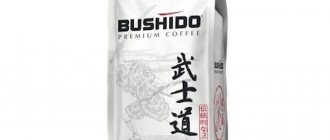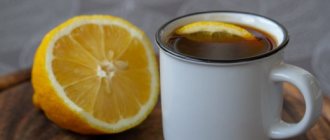Coffee is rightfully the hallmark of Turkey. It was in this country that in the 17th century the technology of roasting, grinding grains and brewing the drink in a Turk or cezve was invented, resulting in a delicious invigorating drink. From the Ottoman Empire it came to Europe, Russia and other countries and continents. Turkish coffee, prepared in the traditional way, is a favorite and irreplaceable for millions of its admirers to this day. Among the various brands of the drink, a special place belongs to Mehmet Efendi coffee, which will be discussed below.
History of the Turkish brand Mehmet Efendi (Kurukahveci)
Mehmet Kurukahveci was the first to think of grinding coffee first and then selling it.
Initially, only green coffee beans were sold in Turkey. Fans of the invigorating drink roasted and ground them themselves, at home. Mehmet Kurukahveci, taking care of his customers, was the first in Istanbul to come up with the idea of selling already ground coffee. Soon there was always a line in his shop, inherited from his father. The grains were roasted over an open fire and ground in front of everyone, so consumers had no doubt about the quality and freshness of the product.
The Turkish manufacturer entered the world market in the 30s of the 20th century, and immediately conquered the Germans and British. Even during the war, Mehmet's sons obtained coffee beans on the black market, and the production of ground coffee did not stop.
Kurukahveci branded stores stock not only family brand coffee, but also various accessories
Currently, the family business is being developed by Mehmet’s grandchildren.
The company's product range includes mixtures of different varieties of Arabica in ground form and in beans. Branded stores offer not only Mehmet Efendi brand coffee, but also related products: Turks, teapots, dishes, coffee grinders, as well as oriental sweets, tea and cocoa from Turkey.
Recommendations and recipes
To properly brew Turkish coffee at home, you need very little: a real cezve, good ground beans and a recipe.
Utensils and ingredients
So, the main attribute is the Turk. Ideally, it should be cast copper. The inner surface is coated with silver plating or food-grade tin. The bottom of the cezve is made wide and the neck narrow. This vessel structure is the best for the formation of fluffy foam and maximum extraction of grains. The volume of the container is no less important.
You cannot brew coffee for two in a large pot. You should select dishes according to the number of servings.
Raw materials and production of the company in Turkey
Factory specialists mix up to seven varieties of coffee in one blend.
Only Mehmet Efendi coffee is used for the production of coffee. Grains of different varieties are purchased from Asia, Africa, and America. Each type of raw material is fried separately, and then tasters and blenders create mixtures (blends) that differ in taste and strength. One mixture includes up to 7 different varieties.
The store in Istanbul is still open today. There, like 150 years ago, everything is done by hand. The beans are roasted in roasters and ground in large coffee grinders in full view of customers. They say that you can find a store with your eyes closed by its wonderful aroma.
Coffee in Mehmet Efendi's shops is still roasted and ground by hand.
The factory produces coffee for sale in large retail chains in Turkey and export to more than 50 countries. Here, all processes - roasting, grinding, packaging - are automated.
Historical reference
Mehmet, who in 1871 inherited a shop on the crowded Tahmis Sok street from his father Hasan Efendi, was young and ambitious. But his far-reaching plans did not include the conquest of the international market. Mehmet wanted to become the best in Istanbul and became one. This did not require a luxurious interior, connections in high circles or foreign investment.
It’s just that Efendi one morning, while brewing coffee, thought: “But it would be convenient to save morning time and shorten the procedure for preparing an invigorating drink...”. Until this point, coffee shops sold green coffee; roasting and grinding of beans was the responsibility of buyers. It all started with the quick-witted Mehmet Efendi, who decided to rely on the inherent laziness of every person to varying degrees.
Effendi thought about his idea for a month, then bought 3 large roasting pans and 2 massive coffee grinders at the market, and hired two assistants. The morning in the store began with lighting a fire and roasting a small batch of beans. The smell of freshly roasted coffee filled the street, attracting shoppers. Having learned that you can buy not only green coffee from Effendi - it was roasted and could be ground at the buyer’s request, coffee lovers lined up and gave the store’s address to each other.
The Turks have always been gourmets when it comes to coffee, so they didn’t buy much so as not to lose the effect of fresh roasting and grinding. They took several portions, and after 2-3 days more came, and a queue formed. While other merchants hired barkers to boost trade and attract customers, Mehmet Efendi simply roasted coffee beans.
Mehmet Efendi store in Istanbul
On the world market, the Kurukahveci Mehmet Efendi trademark (Kurukahveci is a surname, while effendi is simply a polite way of addressing a man) appeared in the 30s of the 20th century. By that time, the company was managed by Mehmet’s three sons, who decided to take the family business to the international level. The first supply agreements were concluded with three stores in Germany, then with Britain.
With the outbreak of World War II and the imposition of an embargo on the import of coffee in any form, trade slowed, although Turkey maintained a position of neutrality. Green beans could be bought on the black market, albeit in smaller quantities than before the war, so the Kurukahveci family business continued to develop.
Today the company owns a store with a small roasting workshop and a factory that produces coffee for export and for sale in Turkish retail chains. The business continues to be family-owned, the fourth generation of Kurukahveci is running the company, and coffee is supplied to all continents except Africa.
Range of ground coffee from Mehmet Efendi
In Russia, Mehmet Efendi coffee can be bought ground or in beans. A premium soluble product called Black Gold has been produced since 2021, but is currently exported only to Germany.
Coffee from this brand is supplied to markets in ground form and in beans.
Ground and bean coffee is packaged in cylindrical cans and foil bags.
The brand's assortment is represented by four product lines. They differ in the method of preparation and taste.
Turkish - grains ground into dust
The Turkish variety has a very fine grind and strong roast.
Traditional Turkish coffee, with which the development of the brand began. This is a tart blend of several varieties of Colombian Arabica. Heavily roasted grains are ground finely into dust. The result is a thick, syrupy drink with bitterness, notes of burnt bread, caramel, and spices. Ideal for cooking in a Turk.
Coffee lovers who are interested in how to brew Mehmet Efendi coffee will need:
- copper Turk;
- a cup with a volume of approximately 65 ml;
- good quality water (60 ml);
- 2 tsp Turkish Mehmet Efendi ground coffee;
- 1 tsp Sahara.
Pour cold water into the pot, add coffee and sugar, stir. Place the Turk over low heat and bring until foam appears, stirring constantly. Remove from heat for a few seconds to allow the foam to settle. Heat again until foam appears. Pour the drink into a thick-walled cup. Serve with a glass of water.
Coarsely ground Filter Coffee
The Filter Coffee variety includes blends such as Colombia, Ethiopia, Asia and Guatemala.
The products meet international standards and are suitable for preparation in a coffee maker, not in a Turk. Has a coarser grind than traditional Turkish coffee. Coffee from each region has its own taste and aroma, depending on the climate and growing conditions. This line is represented by blends from Arabica coffee from various countries.
- Colombia - rich taste with notes of tropical fruits, almonds and chocolate, soft fruity-chocolate aroma, pleasant nutty aftertaste, slight bitterness.
- Ethiopia - expressive floral-citrus aroma, deep taste with hints of exotic fruits, almond aftertaste with a slight sourness.
- Asia - sweetish taste with notes of wheat croutons, cocoa beans and caramel, chocolate-vanilla aroma, slight sourness.
- Guatemala - velvety fruity-chocolate taste, floral aroma and caramel aftertaste with sourness.
Press Pot must be brewed in a coffee machine
This variety is endowed with a slight taste of chocolate, caramel and a nutty aftertaste.
A blend of intensively roasted Colombian Arabica coffee is intended for preparation in a coffee machine. A drink with a light smoky coffee aroma, notes of chocolate and caramel, and a nutty aftertaste with bitterness.
Espresso cappuccino base
Espresso perfectly meets the requirements of the product for preparation in a coffee maker or coffee machine
A blend of seven dark roast Arabica varieties from Colombia, Costa Rica and Guatemala. Rich taste with hints of chocolate, wheat croutons and citruses, the aroma contains fruity and floral notes. Delicate nutty-chocolate aftertaste. Ideal for making espresso in a coffee maker or coffee machine, it can also serve as a base for cappuccino.
If you prefer coffee from foreign brands, then you will be interested in reading about the properties of the famous Davidoff Coffee, and for gourmets we recommend making coffee with cream, Frappuccino and coffee with marshmallows. In the article “Which coffee is the strongest” you will learn which varieties you need to be careful with if you have high blood pressure.
Reviews
Olga: I love real coffee, strong, with bitterness, which invigorates well. I brew either espresso in a coffee machine or Turkish in a coffee pot. I even bought special coffee for this – Efendi. It is inexpensive, with good taste and aroma. I really liked it.
Mila: I really like the procedure of preparing coffee on sand and serving it in these tiny oriental glasses. But this can only be seen in colorful Turkish cafes, where the atmosphere is different and so are the people.
Ivan: I always make coffee using a Turkish coffee pot, I don’t accept other methods, but I don’t use finely ground beans, I don’t like sediment in the cup, I prefer medium-ground ones.
Julia: I am an experienced coffee lover, I have tried many national drinks, but I have not encountered the authenticity that the entire procedure of preparing and drinking coffee in Turkey has anywhere else. I would like to plunge into this pleasant atmosphere again.
Prices and purchasing
If you are on vacation in Turkey, you can bring Mehmet Efendi brand coffee from there. In our country, products can be found in specialized coffee shops and in some large hypermarkets.
Also, some items are sold in online stores.
Here is the approximate pricing policy.
- Turkish coffee Kurukahveci Mehmet Efendi (100g) - 250 rubles.
- Ground coffee Mehmet Efendi 500 g - 1000 rubles.
- Coffee beans Mehmet Efendi Espresso 1 kg - 1980 rubles.
- Grain Columbia, 1 kg – 2500 rubles.











